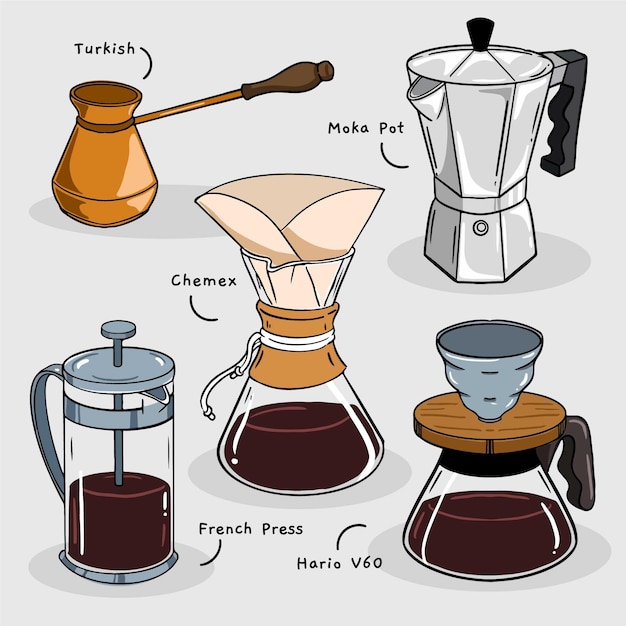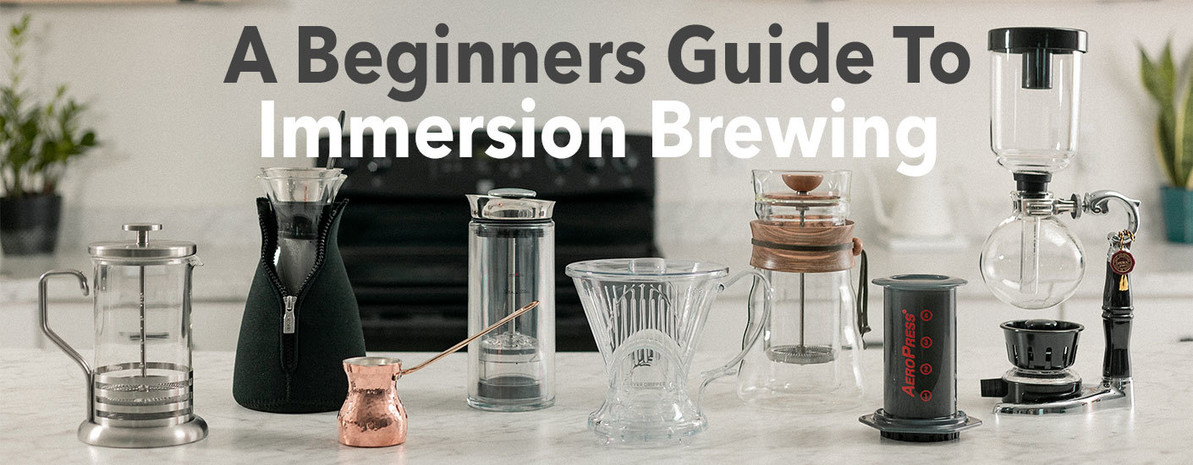Finding the Art of Coffee Brewing Methods: Tips for every single Fanatic
Finding the Art of Coffee Brewing Methods: Tips for every single Fanatic
Blog Article
The Science Behind Coffee Developing: How Temperature and Time Affect Your Beverage
Understanding the science behind coffee brewing discloses that temperature level and time are not plain variables yet crucial components that determine the beverage's flavor account and total top quality. The ideal brewing temperature usually falls between 195 ° F and 205 ° F, while the period of removal varies considerably across various approaches. This interplay of elements can result in a mug that is either wonderful or frustrating. As we discover the nuances of these elements, the inquiry develops: how can one effectively equilibrium temperature and time to achieve that excellent brew?
The Chemistry of Coffee Extraction
The chemistry of coffee removal explores the elaborate procedures that transform raw coffee beans right into the fragrant beverage appreciated worldwide. This transformation mainly involves the solubility of numerous substances existing in the beans, which are affected by elements such as work size, water high quality, and the brewing technique used.
During the brewing procedure, warm water works as a solvent, removing soluble compounds, consisting of high levels of caffeine, sugars, lipids, and acids, from the coffee grounds. Each compound adds to the taste profile, aroma, and body of the final drink. Acids are liable for bright and appetizing notes, while oils add to a rich mouthfeel.
The preliminary stages of brewing extract acids and sugars, leading to a pleasant level of acidity, while long term removal can lead to resentment due to over-extraction of unfavorable compounds. Understanding these chemical communications is critical for maximizing brewing techniques, as the equilibrium between extraction time and water temperature level can considerably influence the total top quality of the coffee.
Suitable Brewing Temperatures
Finding the appropriate developing temperature is essential for opening the full potential of coffee tastes and aromas - coffee brewing methods. Study suggests that the optimal array for brewing coffee exists in between 195 ° F to 205 ° F(90 ° C to 96 ° C) Within this range, the removal process effectively liquifies the desirable soluble substances in coffee beans, causing a balanced and delicious cup
Developing at lower temperature levels, such as listed below 195 ° F(90 ° C ), may lead to under-extraction, yielding an acidic and weak brew with low-key flavors. Alternatively, brewing at temperature levels exceeding 205 ° F(96 ° C) can bring about over-extraction, creating a extreme and bitter taste because of the too much dissolution of unfavorable substances, such as tannins.
Furthermore, the excellent brewing temperature level can vary depending upon the coffee bean kind and roast level. As an example, lighter roasts often take advantage of a little greater temperatures to improve their intricate flavor profiles, while darker roasts might be much better suited to lower temperature levels to mitigate resentment.
Ultimately, preserving precision in brewing temperatures is critical for accomplishing an unified equilibrium of flavors, guaranteeing that every mug of coffee supplies a gratifying sensory experience.
Impact of Brewing Time
Developing time plays an essential role in determining the taste profile and overall top quality of coffee. Much shorter brewing times can result in under-extraction, leading to a weak or sour flavor, as not enough soluble substances are dissolved.
Optimal developing time varies depending on the approach utilized and the work size of the coffee. A French press commonly needs about 4 find minutes, while espresso removal is normally completed within 25 to 30 seconds. It is essential to adjust brewing time in combination with other variables, such as water temperature and coffee-to-water proportion, to accomplish the wanted flavor account.
Comprehending the influence of brewing time makes it possible for coffee enthusiasts to fine-tune their brewing methods, ultimately improving the sensory experience of their mug (coffee brewing methods). With careful focus to this variable, one can open the full possibility of the coffee, revealing its distinct attributes and nuances
Developing Techniques and Their Impacts

For circumstances, methods like French press and cold brew permit a longer steeping time, resulting in a fuller body and robust flavor due to enhanced extraction of oils and soluble solids. On the other hand, espresso brewing utilizes high pressure and a shorter extraction time, producing a concentrated shot that stresses extreme tastes and an abundant crema.
Pour-over methods, such as Chemex or V60, use an even more regulated hop over to these guys extraction process, allowing the brewer to adjust circulation price and water distribution, which can improve brightness and clarity. Percolation methods cycle water via the coffee premises several times, leading to a stronger, often bitter taste.
Last but not least, the usage of paper filters versus metal filters can also influence the final taste; paper filters typically generate a cleaner mug by capturing oils and fine bits, while metal filters permit even more oils to pass through, adding to a fuller mouthfeel - coffee brewing methods. Recognizing these subtleties can raise the coffee experience considerably
Tips for Refining Your Mixture
A well-executed mixture can transform even the most basic coffee right into an impressive experience. To attain this, interest to information is vital. Beginning with high-quality, freshly baked beans, as their flavor account reduces over time. Grind the beans simply before making to maximize quality, ensuring the grind dimension matches your brewing approach-- coarser for French press and finer for espresso.
Water top quality plays a vital duty; use filteringed system water without pollutants. The ideal brewing temperature level varies between 195 ° F and 205 ° F(90 ° C to 96 ° C ) As well warm can scorch the coffee, while also cool may under-extract tastes.
Timing is just as essential. For immersion approaches, steeping for three to five mins is optimum, whereas drip methods commonly take around 5 minutes. Explore brew times to find your preferred stamina.

Conclusion
In recap, the intricate partnership in between temperature and time is extremely important in the coffee brewing process. Understanding these scientific principles equips individuals to fine-tune their developing methods, inevitably leading to a more balanced and enjoyable coffee experience.
Comprehending the science behind coffee brewing exposes that temperature level and time are not simple variables yet pivotal aspects that determine the beverage's flavor profile and overall top quality. Understanding these chemical interactions is critical for enhancing brewing methods, as the balance between removal time and water temperature level can substantially affect the total top quality of the coffee.Brewing time plays a crucial duty in establishing the taste account her explanation and general high quality of coffee. By concentrating on these components-- bean quality, grind dimension, water temperature, soaking time, and proportion-- you can boost your coffee brewing process, resulting in a constantly superior mug.
In recap, the intricate relationship in between temperature level and time is paramount in the coffee developing procedure.
Report this page